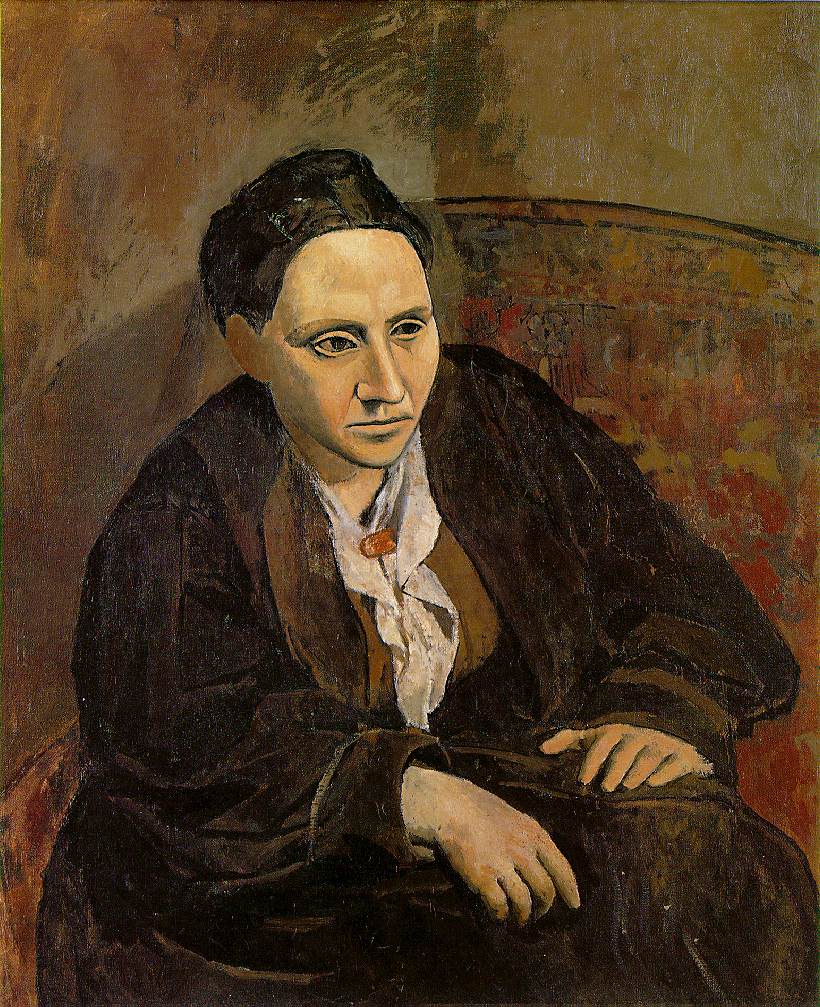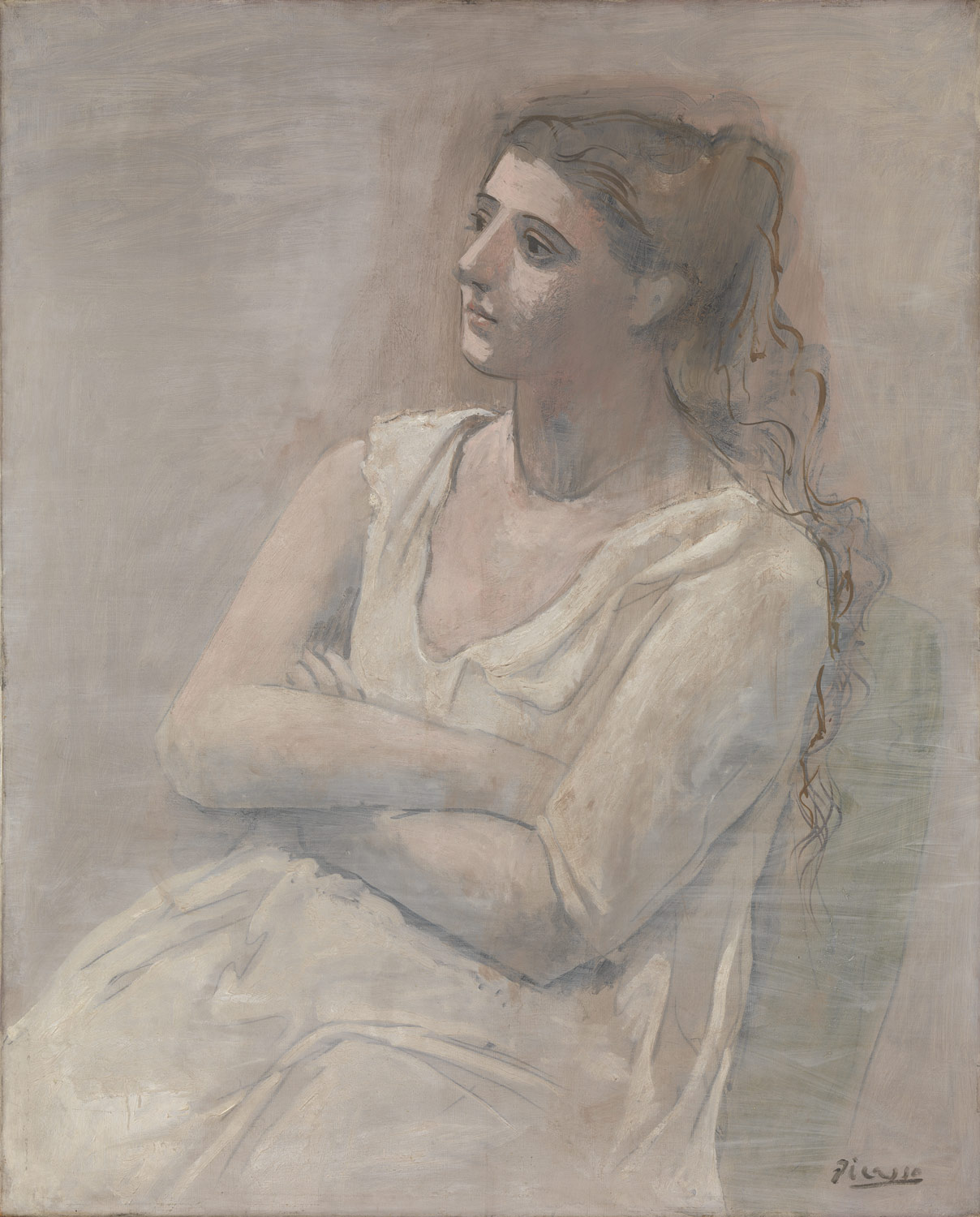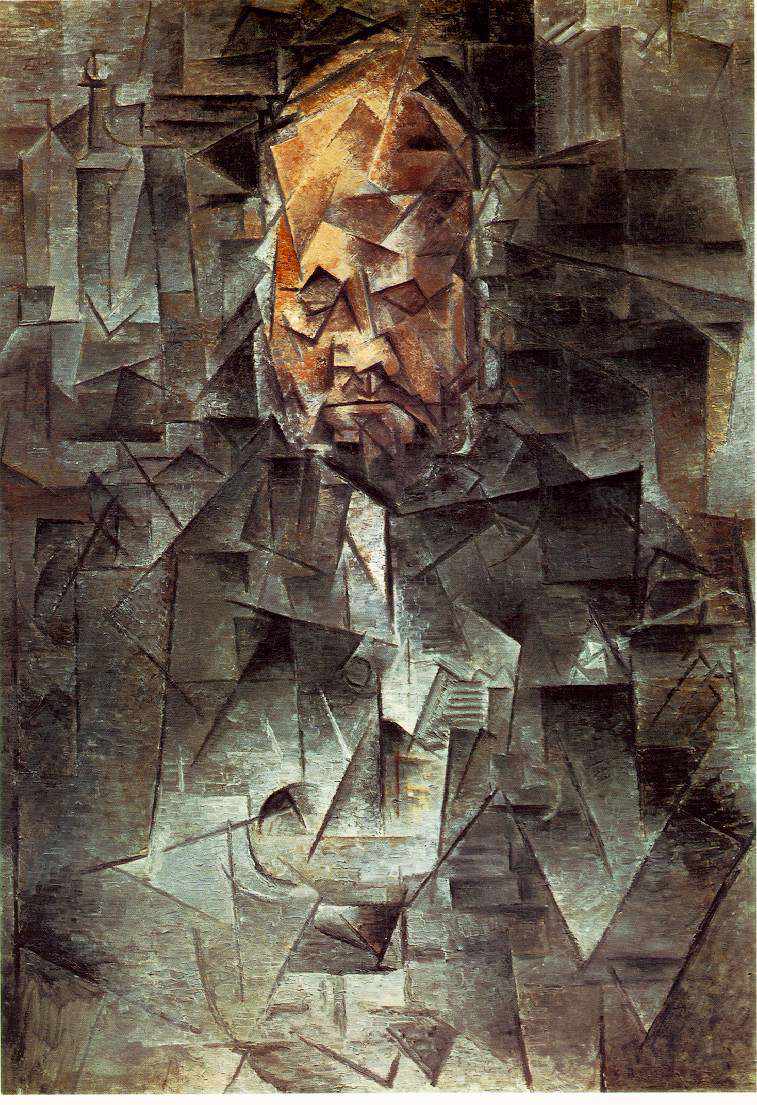The first comprehensive survey ever assembled of the portraiture of Pablo Picasso opened at The Museum of Modern Art on April 28, 1996. Picasso and Portraiture: Representation and Transformation was the first exhibition to study Picasso's career solely from the perspective of his portraits. Comprising 130 paintings and some 100 works on paper, the exhibition traces Picasso's life through his development of the modernist portrait. Intimate portrayals of his family, lovers, friends, and colleagues illuminate the remarkable range of the artist's styles and reveal the connection between his personal relationships and his work.
Drawn from public and private collections throughout the world, as well as from the Museum's own extensive holdings, the exhibition included many works that have never been shown in the United States and a substantial number that have never been exhibited publicly. The exhibition was organized by William Rubin, Director Emeritus, Department of Painting and Sculpture, The Museum of Modern Art, in dialogue with Hélène Seckel, Chief Curator, the Musée Picasso, Paris, and in collaboration with the Réunion des Musées Nationaux, Paris. The exhibition had its only United States showing at MoMA; a smaller version opened at the Grand Palais, Paris, in October, 1996.
Mr. Rubin, who also organized Pablo Picasso: A Retrospective, the Museum's unprecedented 1980 exhibition of approximately 1,000 works, commented, "Understanding Picasso is fundamental to the understanding of twentieth-century art in general. The current exhibition focuses on a relatively unstudied aspect of his enormous oeuvre, enabling us to explore the rich panorama of invention, symbolism, and emotion that drove this artistic genius. The assembled works demonstrate that Picasso redefined the parameters and possibilities of portraiture more than any other painter in the modern era." He continued, "Picasso took the genre to a new level, redefining the portrait as the artist's personal response to the subject. He transformed the portrait from what had long been considered a primarily objective document into a frankly subjective one."
The Exhibition
Picasso and Portraiture focused on the multiple portrayals of the people central to Picasso's life and concludes with a survey of self-portraits from his adolescence through his last years. Because Picasso's view of his subjects was invariably filtered through his personal associations with them, his portrayal of a particular sitter could change radically during the extent of their relationship, ranging in style from primitivist, Surrealist, and Cubist to Neoclassical, among others. In order to fully illustrate the transformations applied to each subject, Picasso and Portraiture was, in effect, organized as a series of miniexhibitions, in which works are grouped according to sitter, as opposed to a purely chronological arrangement. Photographs (often by prominent artists such as Man Ray) and brief biographies of the major subjects accompanied the different portrait groups. In addition, new research revealed the identities of some subjects who were unknown or thought to have been invented.
The exhibition opened with Picasso's early portraits of his family and a series of portraits painted of his childhood friend and later secretary Jaime Sabartés. From there, it explored two early groups of portraits in which the artist began to develop a schematic, sculpturally precise, conceptual style influenced in part by the simplification of features in ancient Iberian sculptures. This style is exemplified in the head of

Woman Plaiting Her Hair (1906), a portrait of Picasso's first love, Fernande,
and in the reworked face in

Portrait of Gertrude Stein (1906).
Olga Khokhlova, the Russian ballerina who was Picasso's first wife, was the inspiration for many of his paintings from 1917 through the 1920s, a period when the artist began to counterpoint his abstract Cubist representations with more realistic Neoclassical images. The complex relationship between the two styles was revealed in the highly abstract 1920 painting

Woman in an Armchair.
Confirming Mr. Rubin's research, an infrared scan of the painting performed in The Museum of Modern Art's conservation laboratory uncovered a Neoclassical painting of Olga in the same position underneath; many of the contours of the finished Cubist work were carried over directly from the Neoclassical under-painting, including the curve of Olga's chin, her right shoulder and arm, and almost the entire outline of the chair.
In the early years of the artist's relationship with Olga, the portraits of her are gentle—the colors subdued and the drawing graceful. As the marriage deteriorated, Picasso's portrayals of Olga became harsher and more transformed. In the cold, monochromatic

Seated Bather (1930), for example, a Surrealist figure inspired by Olga is made up of largely angular, hard, and unyielding forms, and has a head with a sawtooth, steel-trap mouth.
In stark contrast to Seated Bather,

Bather with Beach Ball (1932), a Surrealist portrayal of Picasso's then secret companion Marie-Thérèse, depicts a carefree, soft, rounded, seemingly weightless figure frolicking with a beach ball.
Picasso's long, intense relationship with Marie-Thérèse, who is now recognized as the primary subject in the artist's work of the 1930s, inspired his most erotic style of painting, exemplified by a group of sumptuous nudes including

The Mirror and

Sleeping Nude, both of 1932.

Still Life on a Pedestal Table (1931), although not a portrait in any traditional sense, envisions her poetically through the metaphor of still life. It contains sexually suggestive forms that allude to Marie-Thérèse as the subject: the curved contour of the pitcher is associated with the representation of her breasts and torso from earlier works.
Picasso's relationship with Marie-Thérèse overlapped with his involvement with the Surrealist painter-photographer Dora Maar, which began late in 1936. Portraits of the two women in similar reclining positions, both painted from memory on the same day, in the same setting, and on canvases of the same shape and size, reveal Picasso's different and complex feelings toward them. Marie-Thérèse is depicted in sympathetic terms, her large blue eyes dominating the soft curves of her naturalistically colored face. Dora's portrait reveals a more conflicted visage in which her boldly colored angular figure is set against a background of varying patterns and colors, expressing Dora's energy and passion.
Exhibited together for the first time were a series of Neoclassical portraits from 1923 that had long been thought to be a generic depiction of classical beauty. Mr. Rubin has recently revealed that the portraits depict an actual person—the wealthy American socialite Sara Murphy, whom F. Scott Fitzgerald used as the model for his heroine in Tender Is the Night. Picasso fell in love with Sara in 1923, although it is not known how deeply they were involved. Her countenance is visible in several works in which the artist insinuated her features and hairstyle into portraits of Olga. Sara has also been identified as the subject of many drawings and three portraits on sand from the summer of 1923, which culminated in the celebrated

Woman in White (1923).
Picasso and Portraiture featured an exceptionally rich group of some twenty-one works of Picasso's last wife, Jacqueline Roque, whom he met in 1952. The Jacqueline portraits constitute the largest single group within his portraiture and dominate the artist's work in his seventies and eighties. Ranging from very large-scale oils in one gallery to linoleum prints and charcoal sketches in others, the Jacqueline portraits show the most stylistic variety and the widest range of mediums in any group. Some of the other subjects included in the exhibition were Picasso's art dealers

Ambroise Vollard,

Wilhelm Uhde,

and Daniel-Henry Kahnweiler;
the poets

Max Jacob,
André Salmon, and Guillaume Apollinaire; and his children Paolo, Paloma, Claude, and Maya.
The exhibition concluded with a striking selection of self-portraits representing a period of more than eighty years. Included are the brooding, soulful

1901 self-portrait from the Blue Period; the Iberianstyle

Self-Portrait with Palette (1906), a raw image of the man as the lone worker-painter; and several self-portraits executed in 1972 shortly before Picasso's death at age ninety-one:



Publication

The first book ever published on the subject of Picasso's portraiture accompanied the exhibition. Picasso and Portraiture: Representation and Transformation was edited by William Rubin, who has also written the introductory essay and a chapter exploring the Jacqueline portraits. Other scholars and curators who have contributed essays to the lavishly illustrated volume are Kirk Varnedoe, Chief Curator, Department of Painting and Sculpture, The Museum of Modern Art; Anne Baldassari and Brigitte Léal, Curators, and Hélène Seckel, Chief Curator, Musée Picasso, Paris; Pierre Daix; Michael C. FitzGerald; Marilyn McCully; and Robert Rosenblum. Published by The Museum of Modern Art, New York, it contains 496 pages, 216 color illustrations, and 541 black-and-white illustrations. _